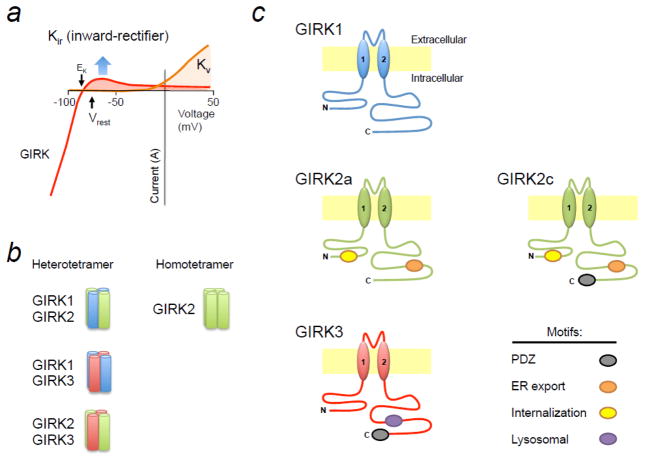Figure 1.
(a) Current-voltage plots for GIRK channels (red) and voltage-gated K+ channels (Kv, orange). Like all inward rectifiers (KIR), GIRK channels conduct a small outward K+ current at the resting membrane potential (Vrest) and a large inward current at potentials more negative than the equilibrium potential, i.e., reversal potential, for potassium (EK). KV channels conduct a large outward current at depolarized membrane potentials. (b) There are three primary GIRK channel subunits in the brain that form hetero- and homotetrameric channels. Notably, GIRK1-GIRK2 heterotetramers are most common in the brain, while GIRK2 is the only subunit that can form functional homotetramers. (c) GIRK channel subunits contain different motifs in the N- and C-terminal domains that affect trafficking.

